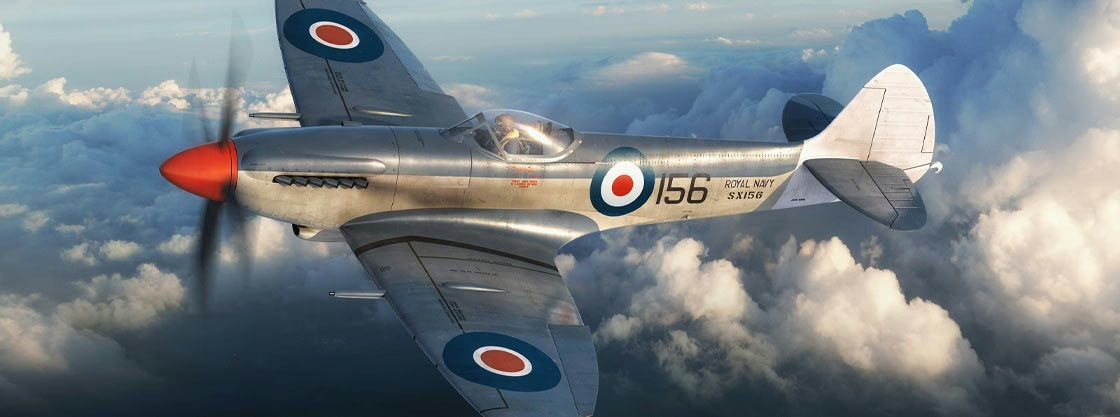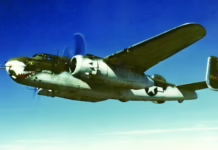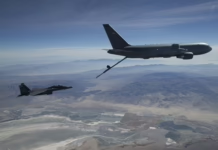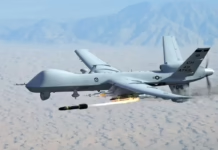In the waning weeks of World War II, British carrier fighters brought the war home to Japan—and paid a steep price for the honor
The pre-dawn darkness over HMS Implacable pressed thick and heavy as Lt. Cdr. Mike Crosley strapped into Seafire L.III PR259. Around him, deck crews swarmed through practiced chaos, readying a dozen fighters for what would mark a watershed moment—British naval aviation’s first strikes against the Japanese home islands themselves.
It was July 24, 1945. The war’s end felt tantalizingly close, yet impossibly distant for the pilots of 880 Squadron. Every mission carried the bitter knowledge that death might claim them even as the enemy’s surrender loomed.
A Fleet Transformed
The British Pacific Fleet had undergone a radical transformation since withdrawing from Okinawa operations that May. At Australia, the force gained fresh muscle when HMS Implacable joined the lineup, bringing with her the Supermarine Seafires of 801 and 880 Squadrons. These graceful fighters—carrier adaptations of the legendary Spitfire—possessed breathtaking performance but suffered notorious fragility in the brutal environment of naval operations.
June brought an operational shakedown against the bypassed Japanese stronghold at Truk in the Caroline Islands. The raid served its purpose, hardening Implacable’s Air Group for the brutal work ahead. Then came an unexpected windfall at the fleet’s forward staging area at Manus. Through arrangements with American forces reportedly involving copious quantities of gin, the British “acquired” a consignment of Curtiss P-40 drop tanks. These modest aluminum cylinders revolutionized the Seafire’s tactical utility.
“A great boost in the Seafire’s operational endurance to 3.5 hours,” Crosley recalled. “Suddenly, it was capable of engaging in ‘Ramrod’ offensive air superiority missions.”
The additional range transformed the aircraft from defensive sentries into offensive weapons capable of hunting the enemy in his own skies.
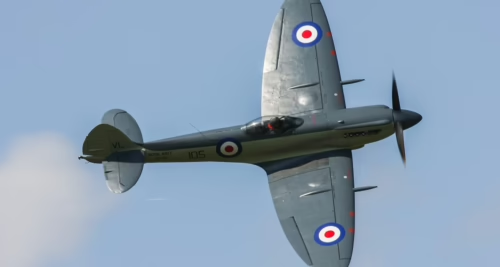 Into the Rising Sun
Into the Rising Sun
American Task Force 38 had commenced operations over Japan on July 14. Three days later, the British Pacific Fleet—designated Task Force 37—joined the campaign. First, formations of Seafires and Fairey Fireflies paraded above the U.S. fleet, familiarizing American gunners with British silhouettes to prevent tragic mistakes.
Initially, planners intended the Seafires strictly for defensive combat air patrols, intercepting the anticipated kamikaze attacks. But the aircraft’s extended legs opened new possibilities. Soon the fighters found themselves escorting Grumman Avenger bombers and conducting independent ground attacks.
At 5:30 on the morning of July 17—a Tuesday that would etch itself into squadron lore—Implacable catapulted a dozen 880 Squadron Seafires skyward. Sub Lt. Pye, Lt. Simpson, and Sub Lt. Dancaster each led four-aircraft sections maintaining defensive watch over the fleet. Simultaneously, the carrier launched 801 Squadron Seafires alongside Fireflies for offensive sweeps, though fog forced those missions’ abortion.
Later that morning brought the moment of truth. Twelve aircraft in three sections roared off Implacable’s deck, bound for Choshi harbor east of Tokyo. The CO led one section, Lt. Goodfellow commanded another, with Lt. Yate heading the third. Thus Lt. Norman Goodfellow became the first Seafire pilot to pierce Japanese airspace, his fighter’s nose crossing the coastline as Crosley’s camera gun captured the historic instant.
Yet triumph mixed with dread. “The sensation of being over Japan was one of foreboding; deep fear,” Crosley later admitted. “We had heard tales of what the locals did to airmen who got hacked down. We got in and out as quickly as we could.”
Thick fog shrouded the target area, allowing only the Fireflies to locate their objectives. When Crosley’s flight returned through the soup, Sub Lt. ‘Legs’ Letham planted Seafire L.III PR126 squarely into Implacable’s barrier during recovery. The squadron had completed three combat air patrols alongside the aborted Ramrod—an inauspicious debut, but a beginning nonetheless.
Proving Grounds
Improved weather the following morning unleashed hell. Implacable dispatched eight Fireflies and twenty Seafires toward Japan. Crosley, with Sub Lt. Peter Arkell flying as his number two, led an attack against Kanoiki airfield near Tokyo. Arkell’s recollection captures the violence:
“You could see the tracers coming up as you dived and you got shaken around by their 40mm too as you approached. But with our new attack scheme it was all over in 30 seconds. We fired everything at then and never came back for a second run.”
The high-speed slashing attacks minimized exposure to ground fire but demanded split-second timing and nerves of steel. Sub Lt. Len Simpson’s Seafire scraped so close to a clifftop that it returned with coastal shrubbery jammed in the radiator intake—a hair’s breadth from disaster.
Poor results and deteriorating weather forced a pause until July 24, by which time HMS Indefatigable—also carrying Seafires—had joined the task force. When operations resumed, the British targeted airfields and installations on Shikoku island along with coastal shipping, facing relatively light but persistent flak.
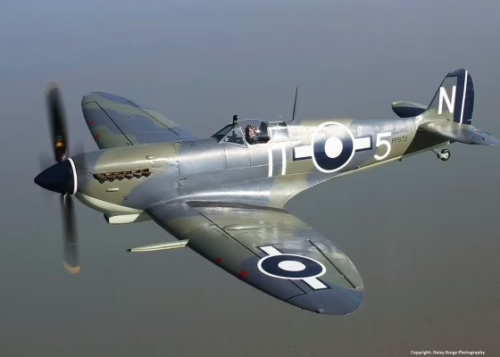 Dawn Raiders
Dawn Raiders
That morning’s first Ramrod launched before sunrise. Crosley, again airborne in PR259, spearheaded an assault on Tokushima’s seaplane base. Taking off in darkness, the fighters navigated toward the Japanese coast as dawn crept across the Pacific.
“Our target was easy to find,” Crosley remembered. “I aimed at a twin-engined aircraft; none of us stayed long enough to find out how we had got on.”
Racing away from Tokushima, the formation dove on Konatsushima. The Japanese had received warning, filling the sky with bright curtains of anti-aircraft fire. Yet twin-float seaplanes sat lined along concrete slipways like ducks in a shooting gallery.
“There were several twin-float planes drawn up on the sloping concrete slipways and we hit many of them,” Crosley recounted. “It was rewarding to see our cannon shells exploding in bright flashes in the dawn light as they hit the slipways round the targets. It was all over in ten seconds or so and none of us were hit by flak.”
Crosley damaged a Kawanishi H6K Mavis flying boat at Tokushima before destroying a Mitsubishi F1M Pete floatplane at Konatsushima. Flying NF501, Sub Lt. E D ‘Crusty’ Pye torched an H6K and damaged a light vessel.
The Price of War
That afternoon, Crosley led another strike against Takamatsu airfield, allegedly bristling with defenses and packed with aircraft. The CO strafed a Nakajima C6N while Goodfellow attacked a train. Darkness had fallen when the formation returned to Implacable, capping a costly day.
From Len Simpson’s section, Sub Lt. Douglas Patullo’s aircraft took hits that ruptured fuel lines. His Seafire plunged into the sea with no hope of recovery. The 22-year-old vanished beneath the waves. Crosley mourned a valued comrade: “Dougy was a first-class aviator, enthusiastic and an above average pilot. He was also a fine, unselfish leader. He was sorely missed.”
Another loss struck during a Ramrod to Okushima airfield. Sub Lt. David Graham’s Seafire suffered catastrophic engine failure. Though he managed to bail out, his parachute failed to deploy—a nightmare scenario every pilot dreaded. He fell to his death.
Elsewhere that day, other Implacable aircraft savaged the escort carrier Kaiyō anchored in Shido Bay, inflicting such grievous damage that her crew deliberately grounded the vessel to prevent sinking.
The following day’s operations saw three flights escort Formidable’s Avengers, peeling off to strafe a coaster and two tugs in the Inland Sea. Landing back aboard, Sub Lt. Dicky Dancaster “floated” PR313 over the arrester wires, smashing into the barrier. The fleet then withdrew for replenishment.
Typhoon Season
Thursday, July 26 brought 264 offensive and 135 defensive sorties across Task Force 37. During one sweep of the Inland Sea, Crosley’s Seafires hammered Harima port west of Osaka, sinking several small vessels. But Sub Lt. P E Holloway planted NF501 heavily on the deck, collapsing the port oleo leg—an occupational hazard with the Seafire’s notoriously delicate undercarriage.
A later mission, again led by the CO, struck Minato airfield before turning on coastal shipping. Crosley’s determined leadership this day earned him a Bar to his Distinguished Service Cross.
An approaching typhoon grounded operations the next day, with only marginal improvement by the 30th. That morning, 880 Squadron escorted a strike near Nagoya, achieving complete surprise. Crosley strafed what he identified as a Mitsubishi G4M Betty bomber before the Seafires hit a railway yard at Akenogahara.
Then 23-year-old Lt. Dougy Yate took flak hits. His aircraft tumbled three miles offshore, adding another name to the squadron’s roll of honor.
Later, the unit shepherded forty Avengers striking Maizura naval base on Japan’s far coast. Approaching the area, the Seafires spotted an enemy destroyer racing toward open water at high speed. Crosley instantly committed his fighters to attack.
“We let him have everything and on the pull-out from a very steep dive we managed to fasten a bead on some flying boats at their moorings on the north side of the fjord,” he related.
Deteriorating weather marked typhoon season’s onset. Beyond replenishment needs, the fleet withdrew to clear the area before the atomic bomb strike on Hiroshima, August 6.
Final Reckoning
The British Pacific Fleet’s next operations commenced August 9 with concentrated strikes against airfields and shipping in northern Honshu. That day, Implacable’s Seafires flew ninety-four sorties while her Fireflies added fourteen more. At Mutsushima airfield, a dozen Japanese aircraft perished alongside several patrol craft offshore. Two destroyer escorts blazed with uncontrolled fires.
Yet the three-hour, twenty-minute mission stretched the Seafire’s endurance to breaking point. Midshipman Mike Banyard, flying NN126, ran so critically low on fuel he made an emergency landing aboard USS Essex—as did Sub Lt. ‘Isaac’ Newton. Sub Lt. Alan Tucker wasn’t so fortunate, forced to ditch. A destroyer rescued him. Three more aircraft suffered damage in landing accidents.
The British Pacific Fleet delivered its greatest single-day ordnance weight on Japanese targets.
Attacks repeated the following day with 880 Squadron again mounting combat air patrols. Early afternoon brought an ambitious strike when Air Group Commander Lt. Col. Peter Nelson Gracie RM led formations against warships anchored in Onagawa Wan in northeastern Honshu. The Seafires provided escort as two warships, numerous merchantmen, several locomotives, and parked aircraft fell to the assault.
Sunday, August 12’s scheduled strike fell victim to deteriorating weather. With the fleet set to withdraw for refit, most ships—including Implacable—departed for Manus.
Three days later, following the atomic bomb attacks, Japan surrendered unconditionally. On September 11, 880 Squadron merged into 801 Squadron, its independent existence ended. But the unit had proudly earned its final Battle Honour: “Japan 1945.”



